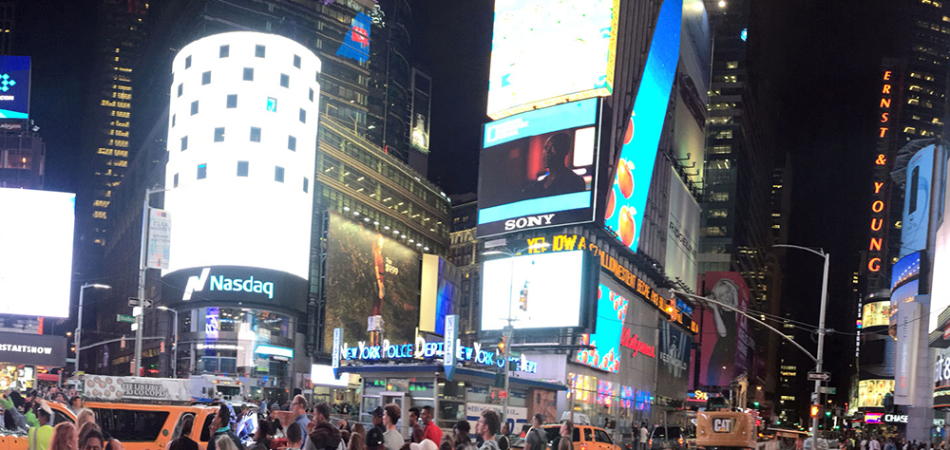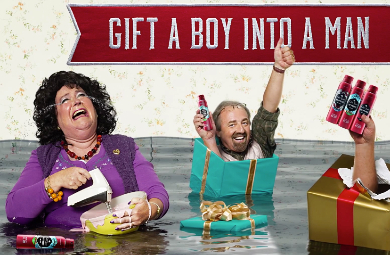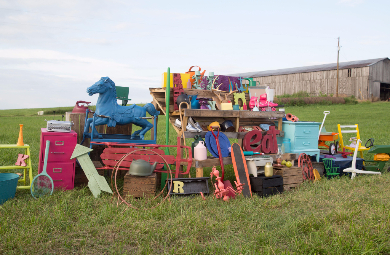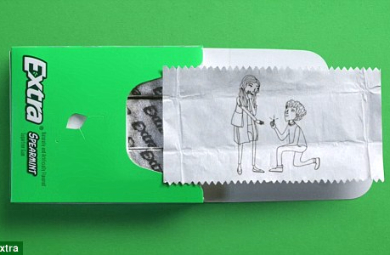
Virgin Media O2 launches summer online safety campaign
Virgin Media O2 and Internet Matters spotlight the importance of having conversations about online safety and starting them early
Advertising at scale in the US


The US is massive. Okay this might be stating the obvious, but a trip to New York is always an eye-opener. Everything is huge - buildings, cars, portion size, and New York isn't even 'real' America.
We were in the US for Advertising Week, which happened to fall at the same time as the first Presidential Debate. It was an obvious talking point and I learned why this will be one of the most important elections in US history.
In brief, it's widely considered that the Senate is up for grabs. Ever since Justice Antonin Scalia died in February, the Supreme Court has had only eight Justices, rather than its usual nine. It's not unrealistic to assume the Senate will be split 50-50 after election day. Once the new Senate is sworn in, they will have the hugely important duty of confirming the replacement for Scalia. Thus swaying the balance of the court for potentially the next 20 years.
What does this mean? The Supreme Court has heard cases on everything from immigration and abortion to gun control. The result of this election will have a long-term effect on all people and all industries. For our sector there's currently a very important patent case involving Apple and Samsung. Apple wants Samsung to pay the full value of its smartphones for infringing on Apple's patents. Samsung thinks it should just pay for the value of the components.
The swathe of votes for both parties come from a country that is roughly the same size as the whole of Europe. While the spoken language is the same, the culture and demographic can make each state seem like a different country. This is why presidential candidates spend so much time and money on the campaign trail.
Companies in the US face the same challenges when it comes to advertising at scale. We spoke to Paul Birks-Hay, President at Venables Bell & Partners, about moving from the UK to the US and the leap from managing multi-million to multi-billion dollar budgets. "The challenge is getting reach for your clients whilst still retaining the highest level of creativity," he said. VP&B achieved this with their Black Friday campaign for REI. In a brave move, the outdoor retailer closed all 143 of its stores. Employees were paid to spend the day outdoors and all of America was invited to #OptOutside (view case study). REI rebelled against Black Friday consumerism and their message resonated across the whole of America.
Throughout Advertising Week there was plenty of conversation around the use of data to help brands personalise. Google presented a session called 'Building Connected Stories' where they introduced their new cross-device re-targeting offer. "Automation is the only way to do precision marketing at scale," said Margo Georgiadis, President of the Americas, Google.
We're talking about AI, and AI favours those who have data. IBM Watson and Under Armour have teamed up to create UO Record, 'the world's first 24/7 connected health and fitness system'. The app has the ability to cross reference data from millions of members and create personalised workouts. It also pulls in information from other apps that IBM Watson has acquired, such as The Weather Channel, to help tweak training programmes. On a much larger scale Watson can use the data to detect patterns in injury and illness on a country or even global scale.
Whilst AI can provide customers with a more personalised service, companies should not forget our desire for a human connection to the brands we buy from.
Research shows that customers value experiences over material possessions. They feed our social currency. Speaking at Advertising Week, Todd Allen VP Global Marketing at Stella Artois, shared the importance of ROE (return on experience) and how AB InBev wants to monetise experiential marketing with the aim to becoming an entertainment business. "The biggest challenge is how to drive scale," said Allen. "How hero events can be scaled right down to the bar or restaurant and into the home."
Stella Artois’ Le Savoir is a multi-sensory dining experience planned and produced by Sid Lee with London 'food wizards' Bompas & Parr. The event took place in Montreal, New York and Buenos Aires. The challenge for Allen and his team was to ensure the hero event had a relevance to the individual sitting at home or in the pub. To achieve this they created additional content from the events. There were also packs for bars and restaurants to recreate a version of the original experience, and kits for customers to use at home.
In the US, whether you're a politician or a company, the biggest challenge is to spread your message across a country that's so vast and diverse. While the temptation is to go for the big TV viewing figures, such as the Superbowl, more creative brands are finding the same reach through a combination of channels.
Read on for examples
In recent years Old Spice has established itself as a manly brand, helping guys navigate the seas of manhood. The new campaign was an opportunity to re-establish the brand as a product for men, not boys. ‘Momsong’ debuted in the break of the NFL playoffs, which ignited conversation weeks ahead of the big Superbowl game. This was coupled with inescapable digital take-overs, which pushed Old Spice into the cultural conversation. The next move was more subversive. They made up nine fake products, including spray tan parties, with copy written specifically for each media placement. Running alongside the activations was free access to Xbox gold membership and custom ‘manly kits’ for key influencers. Using shopping and behavioral data Old Spice were able to target body spray users with bespoke content. Though all these touchpoints the campaign delivered more than 1 billion earned impressions and dominated the category share of conversation.
Agency: Wieden +Kennedy, Portland

Traditionally spray paint companies all talk about the same thing; protection from rust and rain. Krylon, the leading spray paint company in the US, wanted to talk about something people actually cared about. Their campaign focused on demonstrating how the worthless things we all own can become valuable with a simple coat of paint. To support the TV ad Krylon hit the road buying 690 miles of worthless items, renovating them using Krylon products and selling them in real-time on Pinterest. All the items were re-sold for at least double the amount bought for, with all the money going to charity. They used Twitter to spread word of the campaign from the road and engaging more of the country as they created the world’s longest yard sale.
Agency: Deutsch, New York

Extra Gum used to be all about long-lasting flavor, but struggled to build a long-lasting relationship with customers. So the chewing gum devised a clever way of turning their wrappers into a tool to connect with customers. It started with an online love story where the main characters used the wrappers to illustrate key life memories to one another. This hit an emotional chord with the US press and the short films started to spread across social media. To bring the story into the real world, Extra Gum used live artists to turn key moments people were sharing online into beautiful hand drawn wrapper art. Reposting the illustration enabled Extra Gum to get the wrapper infront of millions of people in a truly meaningful way. They used the same drawing style to embed the wrapper into culture, illustrating timely moments as they trended on social media. 1.3 billion impressions later, the US had fallen in love with Extra Gum.
Agency: BBDO, Chicago

Looks like you need to create a Creativebrief account to perform this action.
Create account Sign inLooks like you need to create a Creativebrief account to perform this action.
Create account Sign in